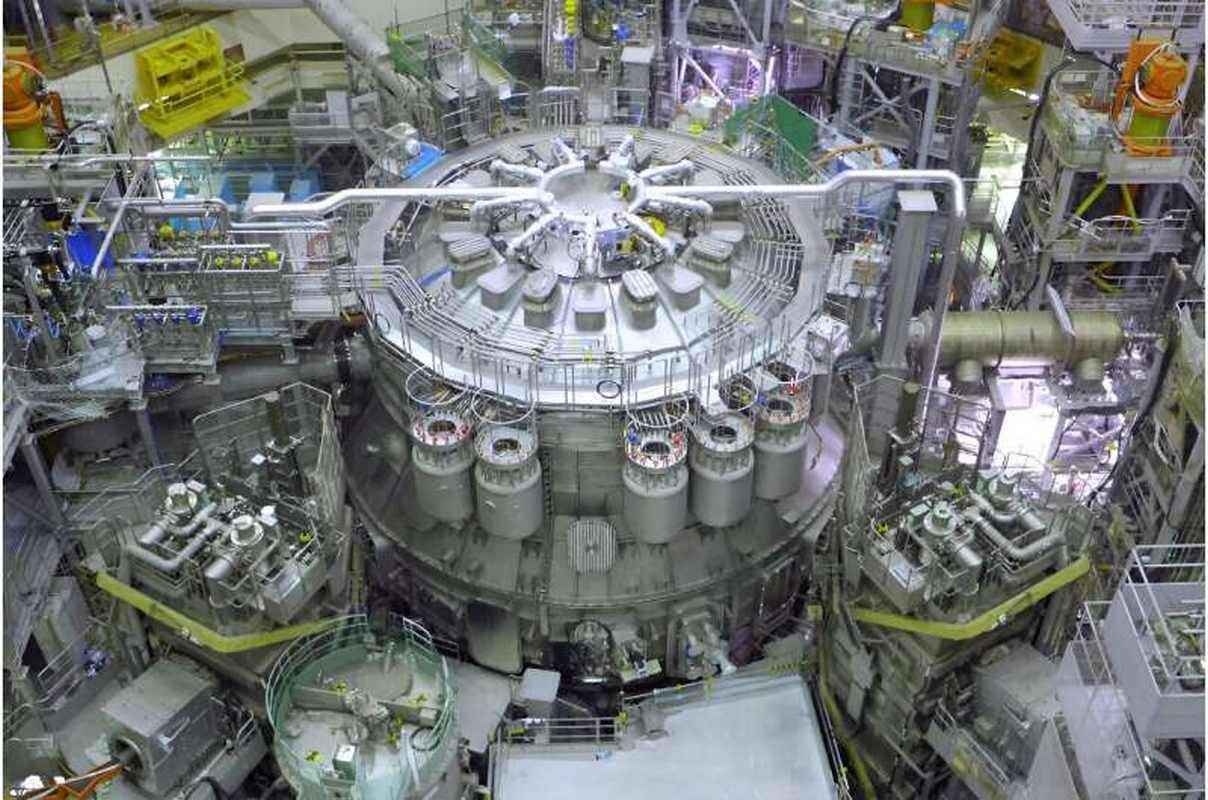Fishing Nets and Carpets Can Be Recycled Molecularly Thanks to Genius Chemist and Brand New Catalyst
When the Nylon-6 samples reached melting temperatures the catalyst caused 99% of the plastic returned to its original building blocks.

The largest operational nuclear fusion reactor on Earth just produced its first plasma when it came online over the weekend in Japan.
A tokamak-style nuclear fusion reactor, the JT-60SA used superconducting magnets to heat and contain a gas to 200 million Celsius, turning it into a form of matter called plasma.
Nuclear fusion is billed as the Holy Grail of renewable energy, the solution to Earth's energy needs, and even the last revolution in energy. It mimics the process that powers our Sun, but in a way that produces no emissions, and no radiation.
Originally developed in the Soviet Union in 1958, the tokamak, which is a Russian acronym for "toroidal chamber with magnetic coils," is a doughnut-shaped reactor made of magnetic coils that can generate the pressure needed to contain the plasma within. When heavy hydrogen isotopes tritium and deuterium are injected into the chamber, their nuclei are fused, which creates energy in the opposite way to nuclear fission, in which an atom is split.
The JT-60SA measures 13.7 meters across and 15.4 meters high, and was assembled by a team representing more than 70 contracted companies and 500 scientists and engineers from Europe and Japan
Work on the device began in 2007 as part of an agreement between the European Union and Japan which aimed to build the JT-60SA as a smaller version of an even larger fusion reactor called ITER which is currently being assembled in France.
EU energy commissioner Kadri Simson said the JT-60SA was "the most advanced tokamak in the world" and called the start of operations "a milestone for fusion history".
"Fusion has the potential to become a key component for energy mix in the second half of this century," Simson added.
Governments and a few private firms around the world have been struggling to advance nuclear fusion technology past the point where it generates more energy than it uses, which has been achieved before at the Lawrence Livermore National Laboratory in the US, but not for very long.
Some firms have their own ideas of the best way in which to generate energy with plasma, but the overall industry has a long way to go, even though it has already come on in leaps and bounds.
Data from the JT-60SA will be used to better inform the construction and operation of ITER, if it can come online in time for the originally predicted date of operation in 2025.
SHARE This Next Step In The March Toward Nuclear Fusion Revolution…
Be the first to comment